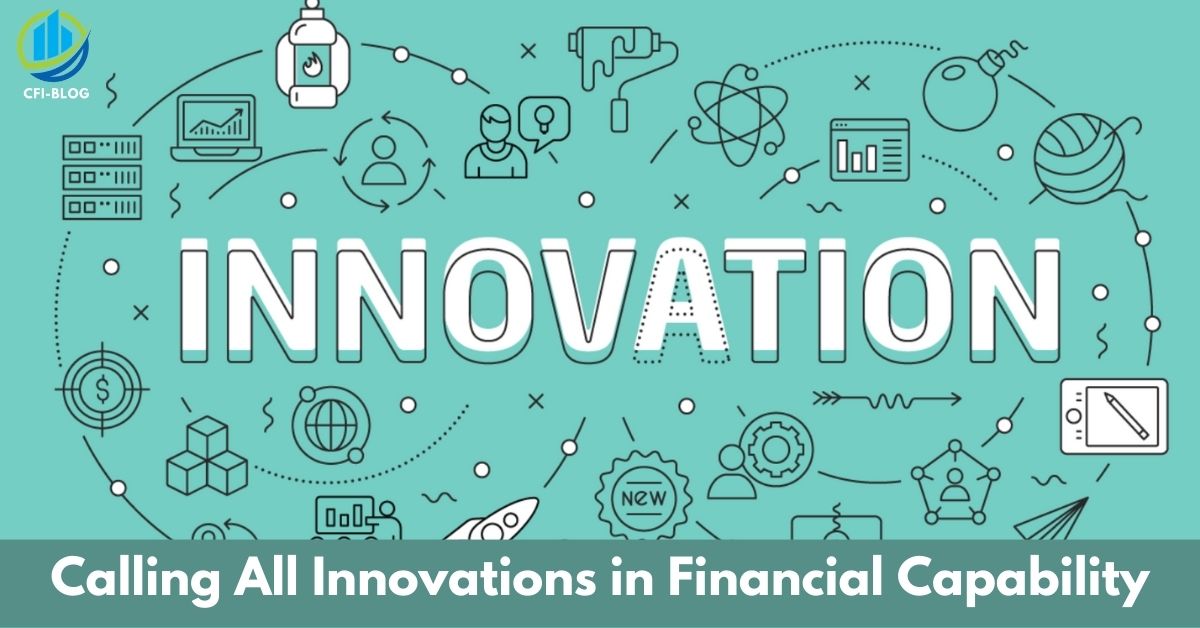The success of financial inclusion is judged by the number of people who are converted from unbanked to banked. Being ‘banked’ means that the person holds a transaction account in a financial institution (commercial banks, cooperatives, or microfinance institutes). However, simply having an account to your name is not enough. The person should be empowered and knowledgeable enough to use the financial facilities that come along with being a banked member of society. This skill is lacking in many and major institutional interventions are required to change the current scenario of financial capability.
Luckily, the interventions have come in the form of innovative product designs, effective delivery strategies, and trained front-line financial workers. The following sections of this article will discuss the obstacles in the path of financial inclusion, how innovations can affect financial capability, the new kinds of financial innovations introduced, and the advantages and disadvantages of financial innovations.
Are Financial Innovations the Answer to the Limitations of Financial Capability?
The introduction of technological innovations in the financial sector has been quite successful in bringing people to the world of finances. Since, the unequal distribution of wealth among the population and financial exclusion have been identified as key limitations in alleviating poverty and subsequently, the standard of living for most people, financial institutions and policymakers have made it a priority to address this situation.
In fact, the implementation of strict regulatory policies, the introduction of upgraded products and services, the promotion of financial education, and many other steps have been taken to make financial inclusion more than just a policy. But the path has not been easy, and financial inclusion has not always translated into being financially capable.
Why has Financial Inclusion Not Evolved More Than Merely a Policy Goal?

Financial inclusion is identified as one of the major drivers for 7 of the 17 Sustainable Development Goals. Needless to say, it is one of the, if not the most important areas that require our attention. This goal came to light when it was highlighted that several sections of the community in both developed and developing countries were unable to access the financial services available in their region. The financial structure of developing countries is pushed further into an insatiable position after they are hit by natural disasters or the breakout of the epidemic. For example, the state of microfinance and the economic toll of Ebola were huge in Africa.
However, for a long time attaining complete financial inclusion only remained as a policy goal, and the appropriate strategies to make this goal a reality still were not decided. Some of the challenges that are causing this problem can be summarized in the following points.
Identifying the Main Actors That Will Drive Financial Inclusion
Financial inclusion is not a goal that can be achieved by the efforts of one organization only. As it is a much-nuanced concept, many agencies play a part in promoting financial inclusion goals in any country. Along with the financial sector (such as banks, community cooperatives, and microfinance institutes), interventions from the local and national government, social workers, non-governmental organizations (NGOs), and international regulatory bodies, for example, World Bank, Consultative Groups to Assist the Poor, Alliance for Financial Inclusion, International Finance Corporation and many more participants, are crucial in the promotion of financial inclusion in the world.
Understanding the Financial Needs of the Financially Excluded
One of the major reasons behind poor financial inclusion rates is the product-centric viewpoint of most financial institutes. This approach tends to design and market products as an unconnected concept rather than taking into consideration the needs of the people who are likely to use this product.
In fact, there are stark gaps in the literature regarding the needs and specific grievances of the demographic who are willingly or unwillingly refraining from consuming financial products. In order to develop and design relevant products and services, financial institutes must first understand the reason why consumers are not engaging with their products.
Identifying Opportunities for Growth Using Technology
Technological innovations are making great strides in every industry. The financial industry also needs to identify areas of improvement within its system and apply technological solutions to remedy the situation. There is an untapped potential in the financial sector for growth and development but this cannot be achieved unless they make their system more flexible and make room for improvements. Thus, financial institutes should strive for growth by collaborating with big tech companies and introducing newer, more convenient, and cost-effective financial products and services.
Financial Capability: What is it?
Although financial inclusion is implicated to be the main goal of many concerned bodies, it is not the end goal. The end goal of these policies is to increase the population’s financial capability. Now, what is financial capability? It is the knowledge required to manage your own finances efficiently and confidently. It requires the skill to operate all financial services both traditional and digital to optimize the management of your own finances in both day-to-day scenarios and in the long run. Financial capability leads to positive financial behaviors and conscious decision-making.
The certain features of financial capability that make it so crucial for everyone are as follows:
- A financially capable person should have the necessary skills and information to operate and understand the present financial concepts, products, and services.
- A financially capable person should be able to leverage their knowledge to manage their finances by avoiding risks and investing wisely.
- A financially capable person will have the right attitude towards the usage of financial services provided to them.
- A financially capable person should imbibe in themselves positive financial behaviors that lead to actions taken to improve their financial outcomes.
Financial Innovations and its Impact on Financial Capability

One of the major impacts of financial innovations is the easy availability of information. This information includes details of products and services, how to access them, how to operate them, and guidelines on managing one’s own finances. As access to information and the proper know-how is the main factor in financial capability, financial innovations play a crucial role in achieving this goal.
Financial innovations have been particularly crucial in their role in the lives of marginalized groups, low-income sections of the community, and women. It has been helping women control their financial lives through digital financial services. The control over their own finances has given them more autonomy to make concrete and positive decisions in other areas of their lives as well.
Categories of Financial Innovations
Financial innovations can be categorized into three types based on which level it is being applied in the workings of the financial institution. This broad classification helps in deciding the kind of innovations that will need to be developed based on the drawbacks at these stages.
Innovations at the Product Level
This is the first stage of inspiration for the development of new technologies that can be applied to product design to increase its efficiency. The client base for any financial institution is composed of people from different income levels with different financial needs and practices. Thus, to meet their demand, financial service providers need to have a diverse range of products under their belt.
And, this is where innovations come into play. Those institutes that can design better products and services in terms of efficiency, performance, and cost-effectiveness are more likely to succeed. However, this is a continuous process and the product designs need to be upgraded on a regular basis to continue to meet the consumer’s demand.
Innovations at the Processing Level
At the processing stage, innovations are applied to boost business operations and provide better service to clients. The innovations include the integration of technologies that will provide smoother processing of customer requests, improved customer services with the help of artificial intelligence applied solutions, reduced time of waiting to procure the financial product or service, and many other such improvements. Such innovations at the processing level help with a seamless customer experience and efficient functioning of every department which is likely to open up new markets for the financial institute.
Innovations at the Financial Institution Level
The innovations at the financial institution level address the structural drawbacks of the system and aim to improve them with the help of innovations. Examples of such innovations include using artificial intelligence and big data to estimate the risk associated with businesses and individuals who want to take out loans. The use of innovations to reform the regulatory practices and monitoring of data to identify risk factors is also an important aspect at this stage.
To summarize any innovative designs or controls implemented at the institutional level in terms of regulations, policies, monitoring, etc. fall in this category of innovations. The innovations at this level have already shown promising results in the financial inclusion of refugees in Al Majmoua in Lebanon.
Biggest Technological Innovations that are Reforming the Financial Industry

Technological innovations have found application in all sectors of the financial industry such as product design, back-end operations, and even customer service. The implementation of technological advancements in the financial sector has greatly improved its engagement within the community. The result is that more and more people are able to access financial services such as investment opportunities, savings, access to credit, and many more services that allow them to efficiently manage their finances.
Some of the biggest tech innovations that are completely transforming the world’s finances in its method of operation, delivery of services, and the financial product itself will be discussed in the following section.
Blockchain
Blockchain is among the most ingenious technologies in the financial industry today. It is used in the creation of cryptocurrency, an alternative form of currency other than cash which exists completely in digital form. Blockchain is mostly regarded for its safety as all its transactions are in encrypted form, it is a highly secure platform for conducting financial transactions. However, it is not its only function, companies are using blockchain technology to protect data, record transactions, verify and identify, improve traceability, and even sign contracts.
Cloud Banking
Cloud banking refers to the supply of hosted computing services over the internet as demanded by banks, fintech, credit unions, or any other financial institutions. The cloud-based architecture allows the banking systems to manage core applications remotely which can improve all areas of operations. Thus, providing a more seamless experience for their customers and reducing the time for delivery of financial services.
Artificial Intelligence (AI) and Machine Learning (ML)
One of the major technological innovations that has taken the financial world by storm is the application of AI and ML. Both of these technologies are the two sides of the same coin. Artificial Intelligence has the power to analyze large data sets and evaluate real-time trends. The use of AI finds its application in analyzing credit histories to determine the creditworthiness of customers, surveying market trends to identify potential risks in investments, providing possible solutions and strategies for better investment opportunities, and many more. Machine learning finds its use to detect fraud, automate trading activities, provide financial advisory services to investors, and many more functions that help the financial industry grow.
Neo Banks
Digitization of banking services is revolutionizing how banks function so much that now the role of physical banks is very limited. The new banks or the digital banks are providing an alternative to physical banks that deliver financial services and products to customers digitally. Thus, making financial services more accessible and convenient. As all the transactions will be conducted digitally neo banks will reduce the cost of delivery leading to cheaper financial services. Although the majority of the banking functions will be performed online, physical bank branches will still have a limited role to play.
Embedded Finance
Embedded finance refers to the integration of financial services like payments of loans, insurance, debit cards, and investment instruments into the fundamental working of non-financial platforms such as e-commerce. This innovation is highly effective for such non-financial platforms as it improves client loyalty by improving transaction speed and providing them with greater facilities out of a single platform.
Essentially, it is the combination of two different functions provided by separate types of institutes into the functioning of a single institution. The biggest example comes from e-commerce platforms that directly offer loans to their customers to buy products without having to separately go to banks to take out loans. This greatly reduces the time taken for each transaction and promotes their businesses.
Regtech
It is extremely difficult to implement and monitor regulatory practices for the banking systems of a large area. Local and national authorities as well as financial markets use the help of technological innovations to remedy this situation. It is used by both the authorities and financial institutions to monitor the correctness and legality of implemented actions. Regtech performs a range of functions for financial institutions such as identifying clients, calculating financial risks, and processing and preserving data.
Robotic Process Automation
The technical innovations are not limited to product design and delivery alone. It also has major applications in the back-end processing of financial institutions as well. The major technological advancement used in activities such as customer onboarding, security checks, credit card, mortgage processing, etc. is Robotic Process Automation or RPA. This technology is used to automatically complete relevant banking functions.
Thus, it frees up the employee’s time to focus on more direct activities such as customer service. The benefits of using RPA are evident in the reduced time of completing tasks, lower cost of transactions and infrastructure, and greater efficiency of the financial services provided.
Big Data
Financial institutions gather information on consumer behavior, market trends, product details and other information on relevant variables to store, analyze and predict future outcomes. This is an essential function as it helps in identifying risk factors, predicting market trends, and understanding consumer behavior. But when this job is performed by humans it has a greater chance of errors and calculation mistakes.
As for the definition, Big Data refers to the large amounts of both organized and unstructured data used in the finance industry to develop strategies and make informed decisions. Big Data is much more efficient in storing, organizing, and analyzing large volumes of data to give quicker results and facilitate the efficient functioning of the whole financial system.
Advanced Cyber Security
As a greater number of people are using digital solutions for accessing their financial services, it gives power to anyone with digital prowess to access these data. So, it is extremely important both from the perspective of the consumers and the financial institutes to have stronger cyber security. Although innovations have led to a lack of safety in the digital world, they can also provide greater options for securing your information.
Open Banking
The collaboration of different industries requires the exchange of information and customer data that allows both industries to provide better services from their end. This system of exchanging data between fintech startups and financial institutions is known as open banking. This allows sharing of data between partners using digital programming interfaces such as APIs that lets a website or app access the bank’s database.
Pros of Introducing Financial Innovations
The effectiveness and importance of financial innovations are strongly evident at all stages of functioning in the financial sector.
- The partnering of different sectors to provide consumers with a convenient suite of products with the help of financial innovations results in greater marketability of the products. Thus, financial innovations help in increasing the sales of related financial services bundled as one.
- With the help of technological intervention, the transfer of information has become more convenient. Businesses can now exchange customers’ data using the internet and mobile technology with relative ease. This exchange of information has also become more convenient for customers who have greater access to important information. Thus, it helps in increasing financial capability.
- Digital innovations greatly reduce transaction costs for financial institutions. It makes their business models more profitable by lowering the costs of information collection, storage, processing, and exchange.
- The increased efficiency of direct delivery channels and the lower prices of financial services and products improve financial inclusion by allowing even the lower-income members of society to participate in financial transactions.
Cons of Introducing Financial Innovations
However, the implementation of financial innovation should be done with a caveat because with the ease of information exchange, the consumers and financial institutions remain exposed to the world and people with immoral intentions may misuse the information. Some of the specific disadvantages of applying financial innovations to all areas of the financial sector are as follows:
- The fintech companies automatically gain control over the sensitive information belonging to the consumers. Consumers should have more choice in how their information is used and control over who has access to that information and how they are using it.
- The challenge of protecting the customer’s information online is quite big. Fintechs and big data need to be more vigilant and invest in better cyber security in order to avoid connectivity problems and disaggregation of links.
- The other side of fast-paced technological advancements is the continuous process of being obsolete. The fixed cost of infrastructure for technological implementation does not reduce following the reduced rate of application of such technologies.
- The entry of new technologies is blocked by current regulatory frameworks which makes it difficult for newer players to enter the market and offer their services.
Frequently Asked Questions (FAQs)
Q1. What is the Need for Innovation in Financial Services?
Financial services are used by a mixed demographic each with their own reason for using formal financial services. Innovations in financial services help in improving the design of specific services and products and it also makes the delivery system more convenient. This helps the financial industry to reach out to a larger section of the population including the marginalized community, the underprivileged, and the underserved sections. Technical innovations in the financial sectors also help the financial industry to grow sustainably.
Q2. What are the Recent Innovations in the Financial Sector?
The financial sector has been recently flooded with digital innovations which have not only introduced newer products into the market but it has also completely changed how financial institutions operate and how they provide customer service. The most striking innovations in recent times that stand out in the financial industry are blockchain, cloud banking, artificial intelligence and machine learning, neo banks, embedded finance, Regtech, robotic process automation, big data, advanced cyber security, and open banking.
Q3. Is Financial Innovation Good?
Financial innovation plays a crucial role in meeting financial inclusion goals which in turn supports gender equality, and food security, improves literacy rates, improved livelihoods, and the overall growth of the economy. Financial innovation has done a lot of good for the growth of the economy but it comes with its limitations such as the newer innovative services may be discriminatory against digital immigrants who have a difficult time coping with the changes.
However, the cumulative good that has come from financial innovations such as reduced agency costs, easing risk sharing, completing the market, and facilitating efficient economic growth is worth the changes in the traditional practices.
Bottom line
Innovations in the world of finance are invaluable in providing efficient services, impactful customer services, lower prices, and greater reach of financial services. However, the regulatory bodies need to adapt to the quickly changing technological advancement in order to make room for the entry of new startups while having strict control over security issues. Conscious control over financial innovations will lead to greater financial capability and subsequently greater financial inclusion.
Author Profile

- Jonas Taylor is a financial expert and experienced writer with a focus on finance news, accounting software, and related topics. He has a talent for explaining complex financial concepts in an accessible way and has published high-quality content in various publications. He is dedicated to delivering valuable information to readers, staying up-to-date with financial news and trends, and sharing his expertise with others.
Latest entries
 BlogOctober 30, 2023Exposing the Money Myth: Financing Real Estate Deals
BlogOctober 30, 2023Exposing the Money Myth: Financing Real Estate Deals BlogOctober 30, 2023Real Estate Success: Motivation
BlogOctober 30, 2023Real Estate Success: Motivation BlogOctober 28, 2023The Santa Claus Rally
BlogOctober 28, 2023The Santa Claus Rally BlogOctober 28, 2023Build Your Team – the Importance of Networking for Traders
BlogOctober 28, 2023Build Your Team – the Importance of Networking for Traders

